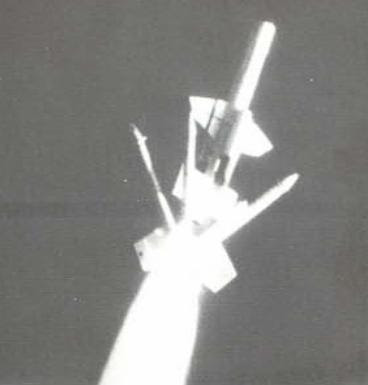The Bloodhound Mk2 was a surface-to-air missile, which was developed from the Mk1 by British Aerospace Dynamics Group for the Royal Air Force. Entering service in mid 1961, it would be standard home defense missile during the Cold War years. It had more powerful Thor ramjets and boosters than its predecessor. To detect, tract, and hit the enemy intruder, it was fitted with a continuous wave (CW) radar guidance, with the missile being equipped with semi-active radar homing system using Ferranti Firelight.
The Bloodhound Mk 2 was also capable of destroying fast targets at height below 300 m (1,000 feet). It was transported by cargo planes. It was also used to reinforce the air defenses of overseas commands. As a matter of fact, the missile was once deployed by the RAF in Malaysia from the Autumn of 1964. When the RAF troops left the area, these weapons were taken over by the Singapore Air Command.
Technical Description
The Bloodhound Mk2 had a cilyndral metal body, with pointed ogival nose cone. It was fitted with pivoted mid-set wings indexed in line with fixed horizontal tail surfaces. It was powered by ramjet engines carried on pylons above and below rear part of the body was well as by equi-spaced wrap-around boosters, each with a large stabilizing fin. Twist and steer control was carried out by means of wings, which could pivot both independently from the other or together in unison.
Specifications
Type: surface-to-air home defense missile.
Warhead: High Explosive with proximity fuse.
Length: 8.46 m (27 feet, 9 inches)
Body Diameter: 0.55 m (1 feet, 9 inches)
Wing Span: 2.83 m (9 feet, 3.5 inches)
Range: 90 km (56 miles)
Guidance: Semi-active radar homing.
Power Plant: two Rolls Royce Bristol Thor ramjet engines. Four jettisonable Bristol aerojet solid propellant boosters.
Below, two Bloodhound Mk2s on their launching platforms at a military base in England.
The surface-to-air missile lifting off into the sky during military exercises.





No comments